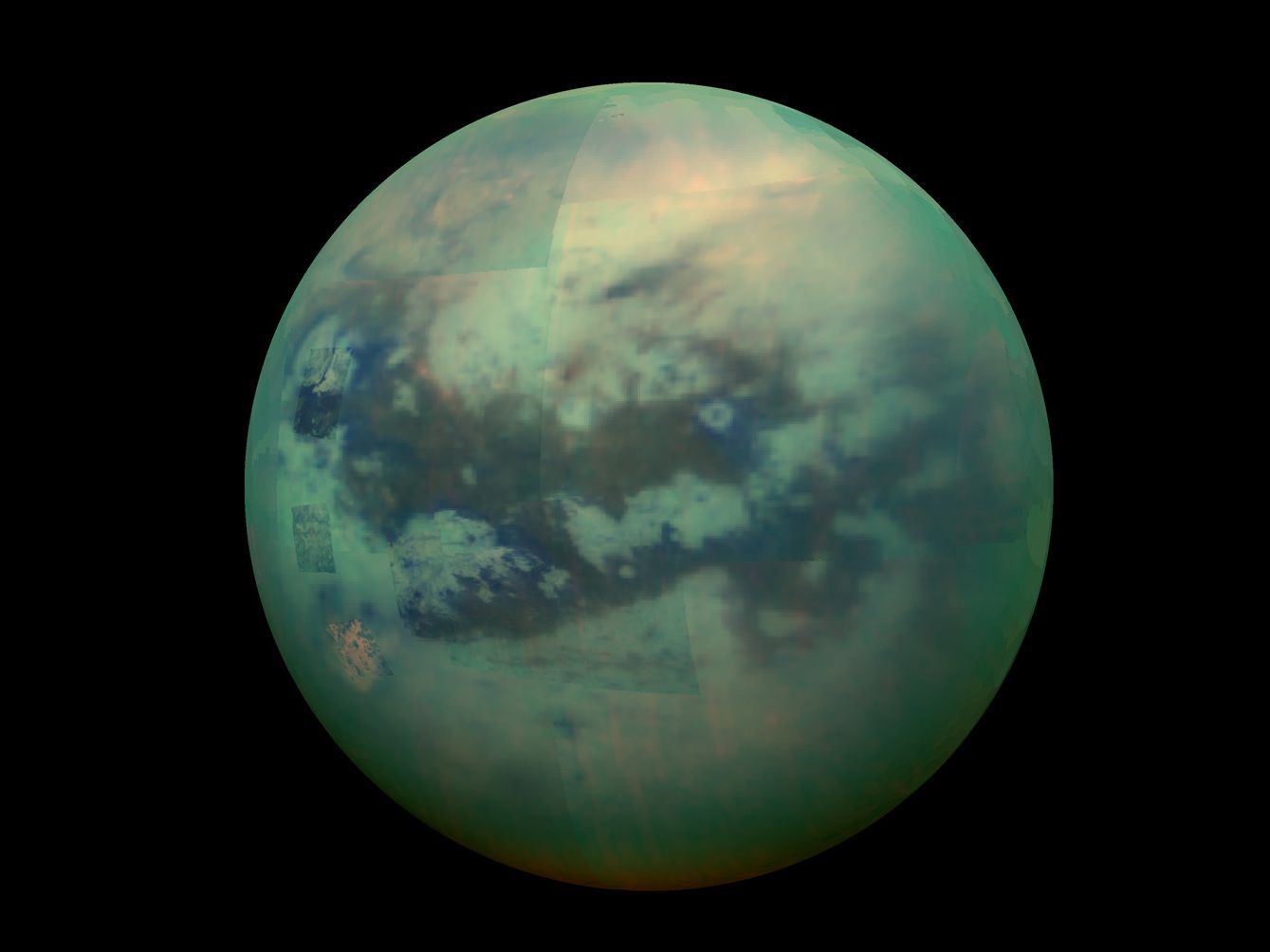
In the vast and awe-inspiring expanse of our Solar System, one celestial body consistently captivates the imagination with its unique and remarkably Earth-like characteristics: Titan, the largest moon of Saturn. Often described as a planet-like moon, Titan stands out not only as the largest moon in its own system but also as the second-largest in the entire Solar System, trailing only Jupiter’s colossal Ganymede. Its enigmatic nature, shrouded by a dense atmosphere, has long made it a subject of profound scientific inquiry and exploration, revealing a world unlike any other we know.
What truly sets Titan apart is its extraordinary atmosphere, denser than Earth’s, a remarkable feature shared by no other moon. Moreover, it is the sole known object in space—apart from our own planet—where clear evidence of stable bodies of liquid exists on its surface. This makes Titan a pivotal focus in the quest to understand planetary evolution and the potential for life beyond Earth, presenting an exciting frontier for astrobiological research.
Titan’s journey into our scientific consciousness began centuries ago, on March 25, 1655, with its discovery by the esteemed Dutch astronomer Christiaan Huygens. Inspired by Galileo’s earlier revelations of Jupiter’s moons and empowered by his own advancements in telescope technology, Huygens, alongside his elder brother Constantijn Huygens Jr., embarked on a telescope-building endeavor around 1650. It was with one of these meticulously crafted instruments that he first observed this distant Saturnian satellite, marking a significant milestone in astronomical history.
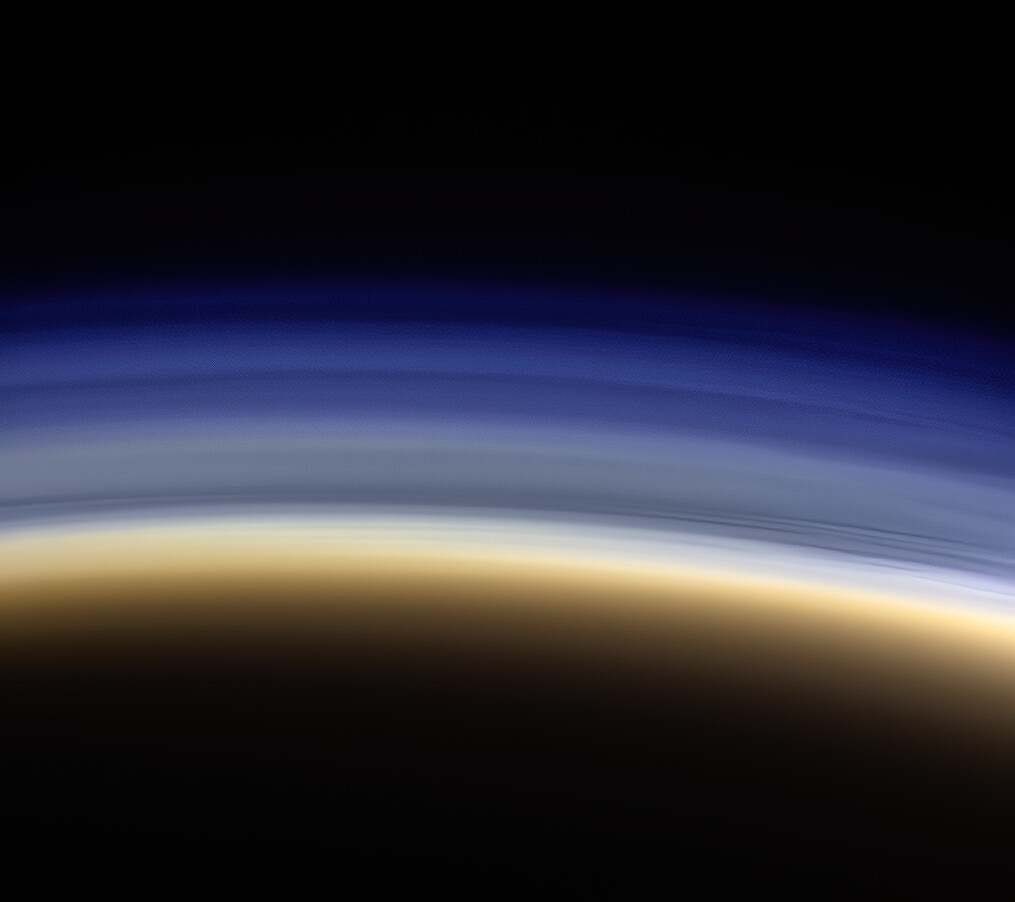
Initially, Huygens humbly referred to his monumental find as Saturni Luna, or “moon of Saturn,” in his 1655 treatise, De Saturni Luna Observatio Nova. As more moons of Saturn were subsequently discovered by Giovanni Domenico Cassini, Titan was temporarily designated Saturn IV before the International Astronomical Union officially recognized it as Saturn VI. The name “Titan” itself, along with those of the other then-known Saturnian satellites, was later proposed in 1847 by John Herschel, the son of William Herschel, honoring the mythological giants of Greek lore.
Orbiting Saturn once every 15 days and 22 hours, Titan is tidally locked in synchronous rotation, perpetually presenting one face to its gas giant parent, much like Earth’s own Moon. This means Titan’s day is precisely as long as its orbital period. Despite its significant size, being 50% larger in diameter than Earth’s Moon and 80% more massive, Titan is surprisingly less massive than Mercury, a distinction attributed to its primary composition of less dense ice rather than Mercury’s iron and rock.
Scientifically, Titan is understood to be predominantly composed of ice and rocky materials, featuring a robust rocky core enveloped by multiple layers of ice. These layers include a crust of ice I h and a subsurface layer of ammonia-rich liquid water, indicating a complex internal structure. Before the advent of the Space Age, Titan’s thick, opaque atmosphere rendered its surface an enduring mystery, much like Venus.
Read more about: The Two Titans: Tragedy in the Deep and Promise in the Stars

However, the Cassini–Huygens mission, which commenced in 2004, revolutionized our understanding, peering through the haze to reveal an astonishing landscape. This landmark mission provided invaluable insights, including the groundbreaking discovery of liquid hydrocarbon lakes in Titan’s polar regions and the observation of its atmospheric super-rotation. The mission’s success painted a vivid picture of a dynamic, geologically young surface, characterized by a generally smooth topography, sparse impact craters, and intriguing hints of mountains and potential cryovolcanoes.
Titan’s atmosphere is predominantly a mix of nitrogen and methane, but the presence of minor components is crucial, leading to the formation of hydrocarbon clouds and a dense, orange organonitrogen haze. Its climate, remarkably, mirrors Earth’s in certain aspects, with active wind and rain cycles shaping surface features such as vast dunes, intricate rivers, expansive lakes, and even seas, which are believed to consist of liquid methane and ethane. This complex weather system is governed by distinct seasonal patterns, further emphasizing its terrestrial parallels.
With both surface and subsurface liquids, alongside a robust nitrogen atmosphere, Titan exhibits a methane cycle that strikingly resembles Earth’s water cycle, albeit at an incredibly frigid average temperature of about 94 K (−179 °C; −290 °F). These compelling factors collectively contribute to Titan being frequently hailed as the most Earth-like celestial object known in the Solar System, igniting profound curiosity about its potential for harboring unique forms of life.
Early observations of Titan were limited by its atmospheric veil. In 1903, astronomer Josep Comas i Solà noted distinct limb darkening, the first indirect evidence of Titan possessing an atmosphere. This was further substantiated in 1944 when Gerard P. Kuiper utilized spectroscopic techniques to confirm the presence of methane in its atmosphere. These pioneering efforts laid the groundwork for future, more ambitious missions.

The advent of the space age brought about a new era of Titan exploration, starting with Pioneer 11 in 1979. While its images were limited, Pioneer 11 did provide early indications that Titan was likely too cold for life as we know it. Subsequently, both Voyager 1 and Voyager 2 examined Titan in 1980 and 1981. Voyager 1, specifically optimized for a close Titan flyby, was instrumental in precisely determining the atmospheric density, composition, and temperature, as well as obtaining an accurate measurement of Titan’s mass.
Despite the atmospheric haze obscuring direct surface imaging during the Voyager missions, digital processing of Voyager 1’s images in 2004 hinted at the light and dark features, later identified as Xanadu and Shangri-la, which had also been observed in the infrared by the Hubble Space Telescope. These early missions, though constrained by technology, were crucial in setting the stage for more advanced exploration.
The true breakthrough arrived with the Cassini–Huygens mission, a collaborative endeavor by the European Space Agency (ESA) and NASA. The Cassini spacecraft reached Saturn on July 1, 2004, and immediately began the arduous but rewarding task of radar mapping Titan’s surface. On October 26, 2004, Cassini executed its first close flyby, capturing the highest-resolution images of Titan’s surface to date, revealing previously unseen patches of light and dark terrain at a mere 1,200 km altitude.
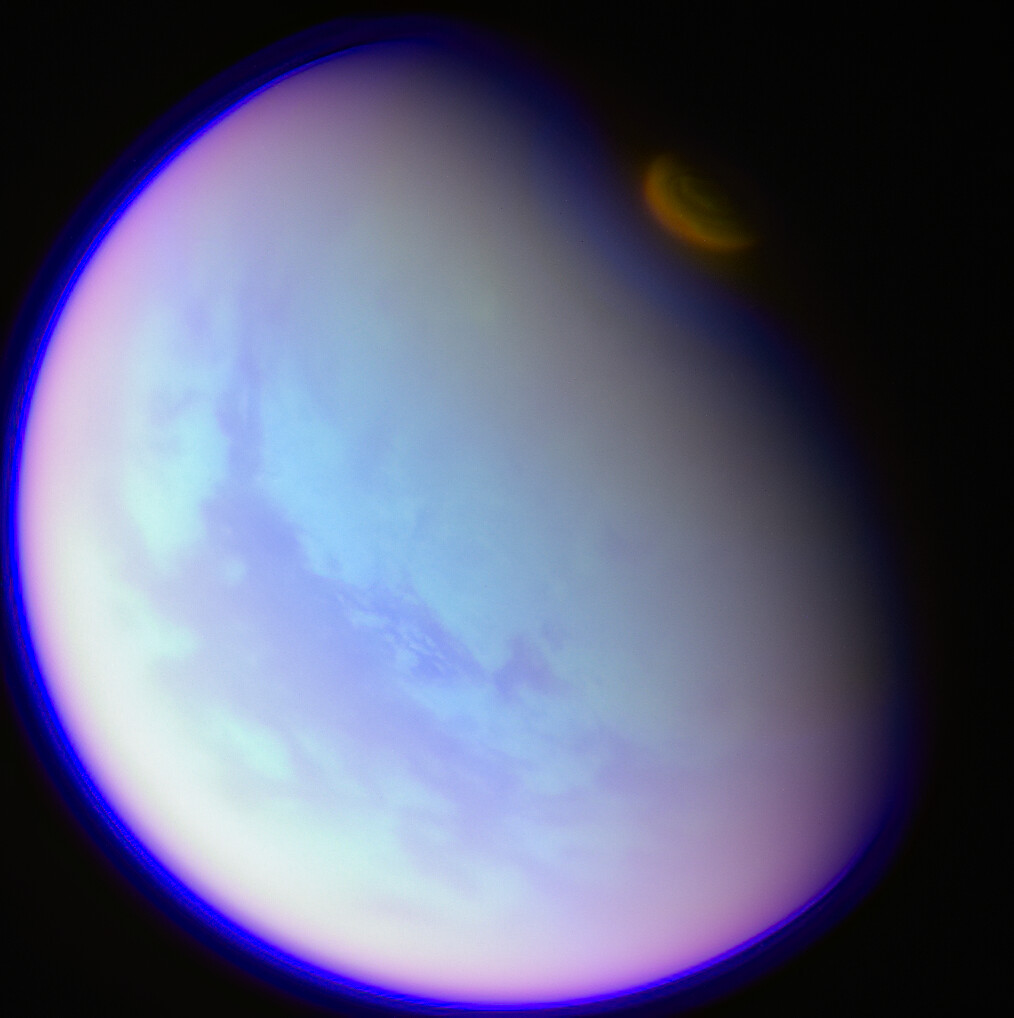
Cassini’s subsequent targeted flybys, including the closest at 880 km on June 21, 2010, systematically unveiled the moon’s complex geology. Among its most significant findings was the abundant presence of liquid in Titan’s north polar region, manifesting as numerous lakes and seas. This definitive evidence solidified the hypothesis of an active hydrocarbon cycle, further cementing Titan’s unique planetary standing.
Perhaps the most dramatic moment of the mission was the landing of the Huygens probe on January 14, 2005. This intrepid atmospheric probe became the most distant body from Earth to have a space probe land on its surface, a testament to human ingenuity and perseverance. As Huygens parachuted through Titan’s atmosphere, it provided invaluable in-situ data, confirming that many surface features had been shaped by fluid activity in the past.
Huygens landed near a bright region now named Adiri, photographing pale hills traversed by dark “rivers” flowing into a dark plain. Scientists now understand that these highlands are primarily water ice, while dark organic compounds, formed in the upper atmosphere from the Sun’s ultraviolet radiation, descend as rain. Over geological timescales, this methane rain washes the organic material down the hills, depositing it onto the plains.
Upon touchdown, Huygens captured images of a dark plain strewn with small rocks and pebbles composed of water ice. The vivid details, such as a 15-centimeter rock and a 4-centimeter rock, underscored the tangible reality of this alien landscape. Evidence of erosion at the base of these rocks strongly suggested past fluvial activity, with the ground itself being a darker-than-expected mixture of water and hydrocarbon ice. In a fitting tribute, the landing site was later named the Hubert Curien Memorial Station in March 2007.
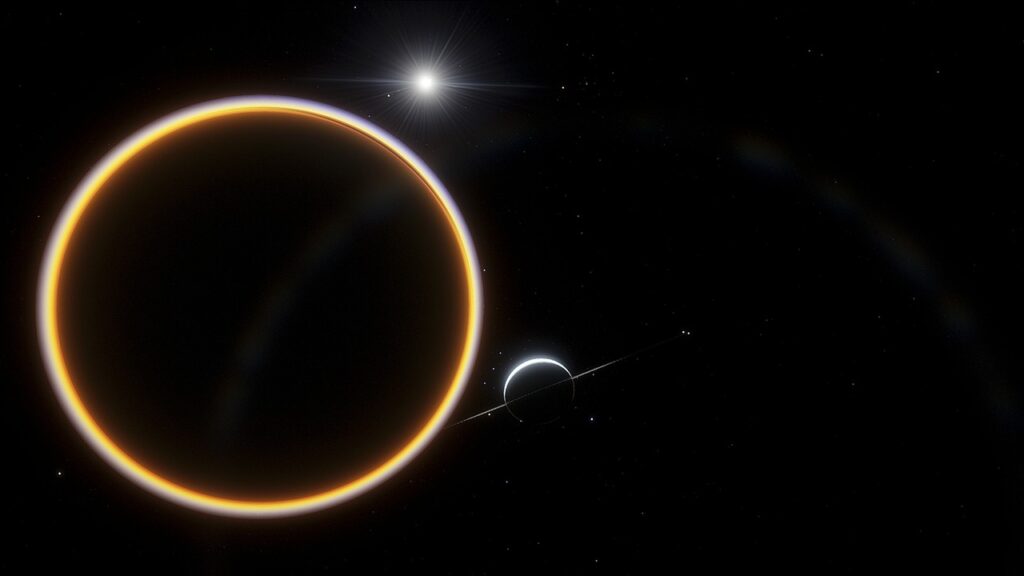
Titan’s surface, though ancient in its formation alongside the Solar System, is geologically young, estimated to be between 100 million and 1 billion years old, indicating ongoing geological processes. Its incredibly thick atmosphere, four times denser than Earth’s, has historically complicated imaging in visible light. However, Cassini’s infrared instruments, radar altimetry, and synthetic aperture radar (SAR) imaging successfully mapped extensive portions of the moon.
These images have revealed a surprisingly diverse geology, encompassing both rugged and smooth regions. Features suggesting volcanic origins, possibly disgorging water mixed with ammonia onto the surface, have been observed. Evidence also points to a substantially rigid ice shell, which might imply limited geologic activity. Moreover, striking streaky features, some hundreds of kilometers long, suggest the powerful influence of windblown particles, shaping the landscape in a manner reminiscent of terrestrial deserts.
Remarkably, the surface exhibits a general smoothness, with the few identified impact craters appearing partially filled in, likely by raining hydrocarbons or cryovolcanic processes. Radar altimetry further indicates low topographical variation, typically within 150 meters, though occasional elevations of 500 meters and mountains reaching over a kilometer in height have been discovered, adding to the moon’s intricate topography.
Broad regions of bright and dark terrain define Titan’s landscape. Among these, Xanadu stands out as a large, reflective equatorial area comparable in size to Australia, first identified by the Hubble Space Telescope in 1994 and later extensively viewed by Cassini. This convoluted region is characterized by hills, valleys, and chasms, crisscrossed by dark lineaments that resemble ridges or crevices. These features could signify tectonic activity, implying a geologically young Xanadu, or they might be ancient, liquid-formed channels indicative of erosion by past stream systems.
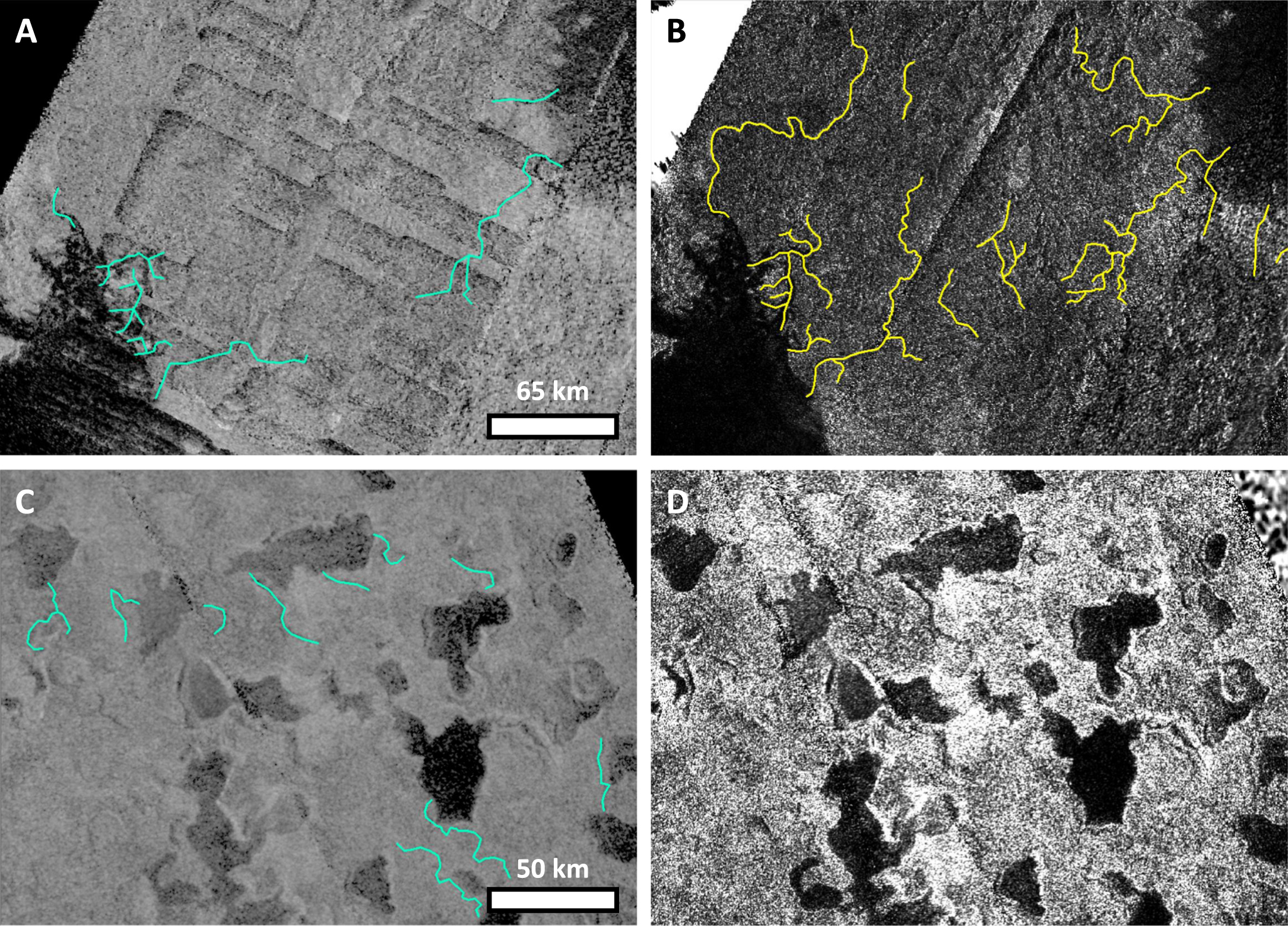
Beyond Xanadu, other dark areas of similar scale have been observed, with at least one, Ligeia Mare—Titan’s second-largest sea—identified as almost purely a methane sea. The confirmation of liquid hydrocarbons on Titan, initially hinted at by Hubble and radar observations in 1995, was definitively established by the Cassini orbiter in January 2007, marking a pivotal moment in planetary science.
These observed lakes and seas are predominantly concentrated in Titan’s polar regions, where the colder temperatures ensure the stable presence of permanent liquid hydrocarbons. In the north polar region, three colossal seas dominate: Kraken Mare, the largest; Ligeia Mare, the second-largest; and Punga Mare. These vast bodies fill broad depressions, collectively accounting for roughly 80% of Titan’s total sea and lake coverage, spanning an astounding 691,000 km². Their similar sea levels strongly suggest a hydraulic connection, forming an interconnected liquid network.
In contrast, the southern polar region hosts four dry, broad depressions, which scientists interpret as potentially representing dried-up seabeds, hinting at past hydrological cycles. Smaller lakes also dot Titan’s polar regions, covering an additional cumulative surface area of 215,000 km². While no permanent lakes have been confirmed in lower-latitude or equatorial regions, the possibility of seasonal or transient lakes forming after major rainstorms remains an exciting area of speculation.

Cassini RADAR data has been instrumental in conducting bathymetry of Titan’s seas. Subsurface reflections have allowed measurements of maximum depths, with Ligeia Mare reaching approximately 200 meters (660 ft) and Ontario Lacus about 90 meters (300 ft). The chemical composition of Titan’s lakes and seas is primarily methane (CH₄), with smaller proportions of ethane (C₂H₆) and dissolved nitrogen (N2).
Variations exist across different bodies; Ligeia Mare’s composition is consistent with 71% CH₄, 12% C₂H₆, and 17% N₂ by volume, while Ontario Lacus shows a different blend of 49% CH₄, 41% C₂H₆, and 10% N₂. Given Titan’s synchronous lock with Saturn, a permanent tidal bulge of roughly 100 meters exists. While orbital eccentricity causes tidal acceleration to vary by 9%, the long orbital period results in remarkably gradual tidal cycles, with a tidal range in major seas estimated at a subtle 0.2–0.8 meters (0.66–2.62 ft).
In a groundbreaking study published in July 2025, NASA researchers announced the identification of cell-like compartments called vesicles, which are essential precursors for living cells, that could potentially form in Titan’s hydrocarbon lakes. Astrobiologists theorize that these liquid hydrocarbons might facilitate the formation of molecules necessary for life, offering a tantalizing window into the very mystery of how life itself emerged on Earth, perhaps under vastly different chemical conditions.
The geological activity on Titan also extends to tectonics and cryovolcanism, though the identification of cryovolcanic features remains a subject of ongoing debate due to imagery limitations. Cassini RADAR and VIMS imagery have revealed numerous landforms interpreted as candidate cryovolcanic and tectonic features. A 2016 analysis of mountainous ridges, concentrated in Titan’s equatorial regions and oriented primarily east to west, suggested they resemble terrestrial fold belts, indicative of horizontal compression or convergence. This global distribution might even imply global contraction of Titan’s ice shell.
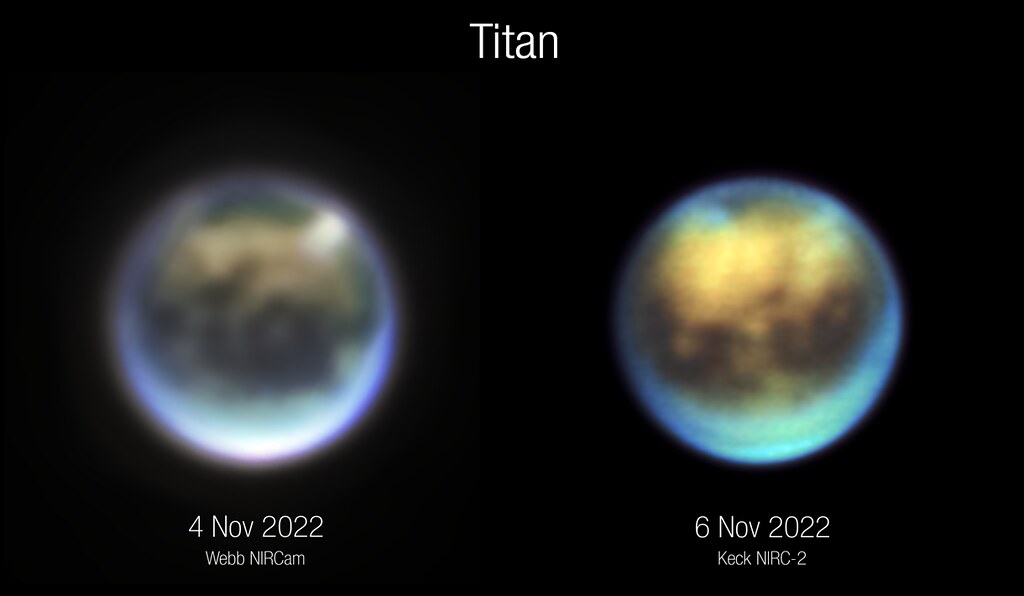
Among the likeliest cryovolcano candidates is a complex of landforms encompassing Doom Mons, Erebor Mons (two mountains), Sotra Patera (a large depression), and Mohini Fluctus (a system of flow-like features). The notable brightening of parts of Sotra Patera and Mohini Fluctus between 2005 and 2006, while surrounding plains remained unchanged, potentially indicates ongoing cryovolcanic activity. Indirect evidence, such as the presence of Argon-40 in Titan’s atmosphere—sourced from the decay of 40K within its rocky core—lends further support to the idea of active geology, with cryovolcanism as a plausible mechanism for releasing isotopes from the interior.
Titan’s surface possesses comparatively few impact craters, a testament to active geological processes like erosion, tectonics, and cryovolcanism that continuously work to erase them over time. Compared to the craters found on similarly sized moons like Ganymede and Callisto, Titan’s craters are notably shallower, many featuring dark, sediment-filled floors. Geomorphological analyses suggest that erosion and burial are the primary mechanisms modifying these impact features.
The distribution of craters on Titan is also uneven, with polar regions being almost entirely devoid of identified craters, while the majority are concentrated in the equatorial dune fields. This disparity might be explained by ancient oceans that once covered Titan’s poles, extensive polar sediment deposition from past rainfall, or higher rates of erosion in the polar regions, all contributing to the dynamic and evolving face of this moon.
The remarkable journey of discovery on Titan, from Huygens’ initial observation to the sophisticated insights provided by Cassini-Huygens, underscores humanity’s relentless pursuit of knowledge. With its unparalleled atmosphere, stable liquid bodies, and complex organic chemistry, Titan stands as a beacon in our Solar System, offering not only a unique window into planetary evolution but also a profound opportunity to explore the fundamental processes that might lead to life. As future missions prepare to delve deeper into its mysteries, Titan promises to remain a source of endless wonder and a vital key in unlocking the grand narrative of cosmic existence.



